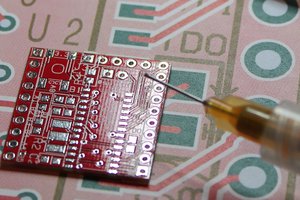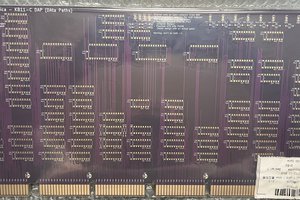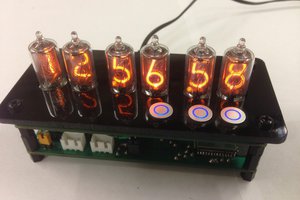Spoilers: Here is what the end result looks like! I can't get enough of that steel blue glow of the VFDs. I'm a huge fan of vintage display technologies (Nixies, Numitrons, split flap, you name it) and will take this beautiful piercing blue glow over boring old LED modules any day.
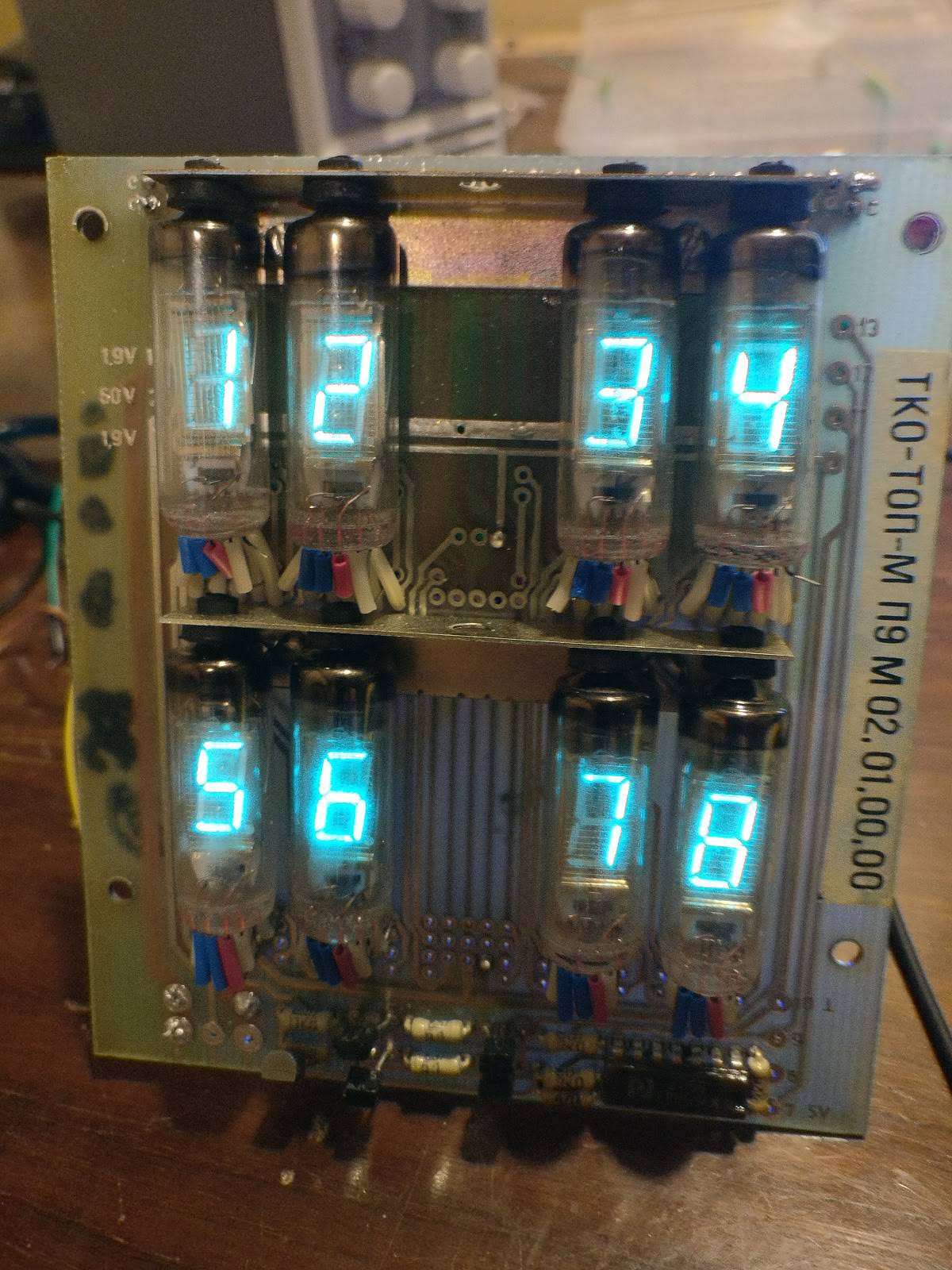

Found a bunch of these interesting looking vintage surplus VFD-tube display boards on eBay a few months ago. They were pretty cheap, so I bought a few and thought I'd try hacking them back to life. They still come up for sale from various sellers and after my experience completing this project, I'd recommend picking one up if you love tinkering.
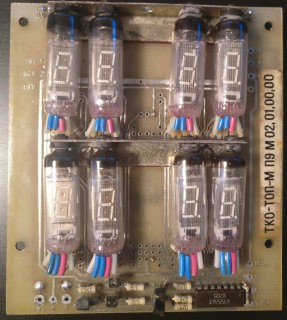
Wow, these boards look awesome! Quite unlike anything that's been produced in many years.
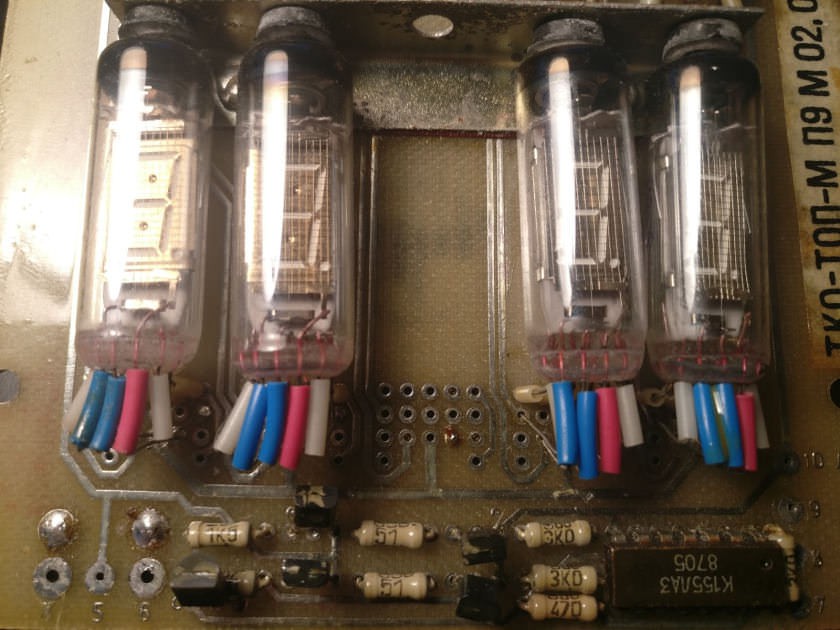
Two transistors, a mystery chip and a few resistors are the only components on this board. Clearly the bulk of the circuitry for driving the tubes was located on a separate board.
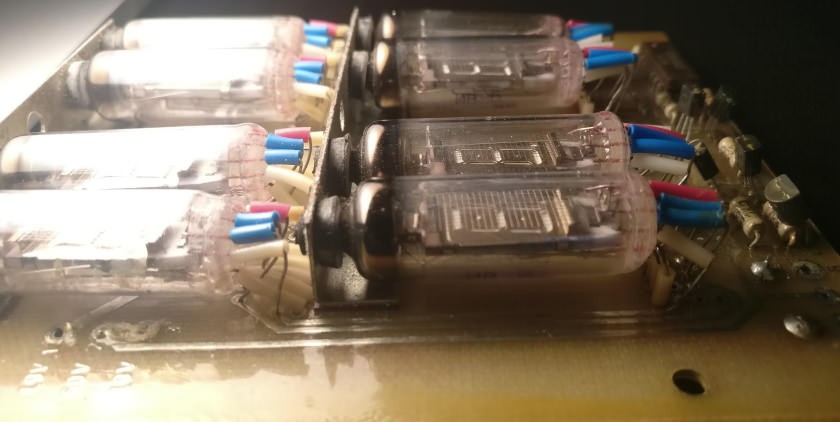
This really does appear over engineered by today’s standards. Note that the designers went through the effort to create a custom metal bracket with holes to fit the nipple of the tubes. A rubber grommet protects the fragile glass against vibration. Also, it is clear that a lot of tricky hand assembly went into the manufacture of this board, with the way the tube leads have been insulated with loose plastic sleeves and precisely bent to line up with the footprint on the board at a right angle.

The tubes themselves are actually fairly remarkable feats of mass-produced engineering as well, each containing many tiny metal parts assembled together and sealed in a glass envelope. Compared to today’s ubiquitous LED modules, this almost looks like alien technology. The board uses the fairly common IV-6 tube. I actually have about a dozen of these bare tubes in my parts bin, but have yet to incorporate them into a project.
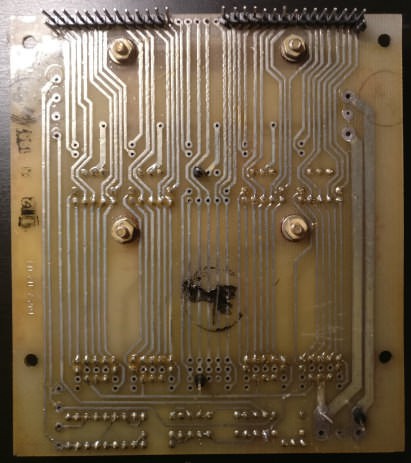
A stamp on the left side of the back of the board gives a manufacture date of 1987. I would have thought LED displays would have been in use by then, (which would have greatly simplified the design of this display module, whatever it was used for,) but perhaps this was still the most cost effective or reliable approach at the time. Or some engineering house in the USSR just got stuck with a huge overstock of outdated tubes and needed to get rid of them somehow. The back of the board reveals that many of the connections on the two tubes in each column are grouped together, meaning that the display was designed to be multiplexed four tubes at a time. I also took the opportunity to solder a row of male header pins to the top of the board, as the connections on the board conveniently had 0.1 inch spacing.
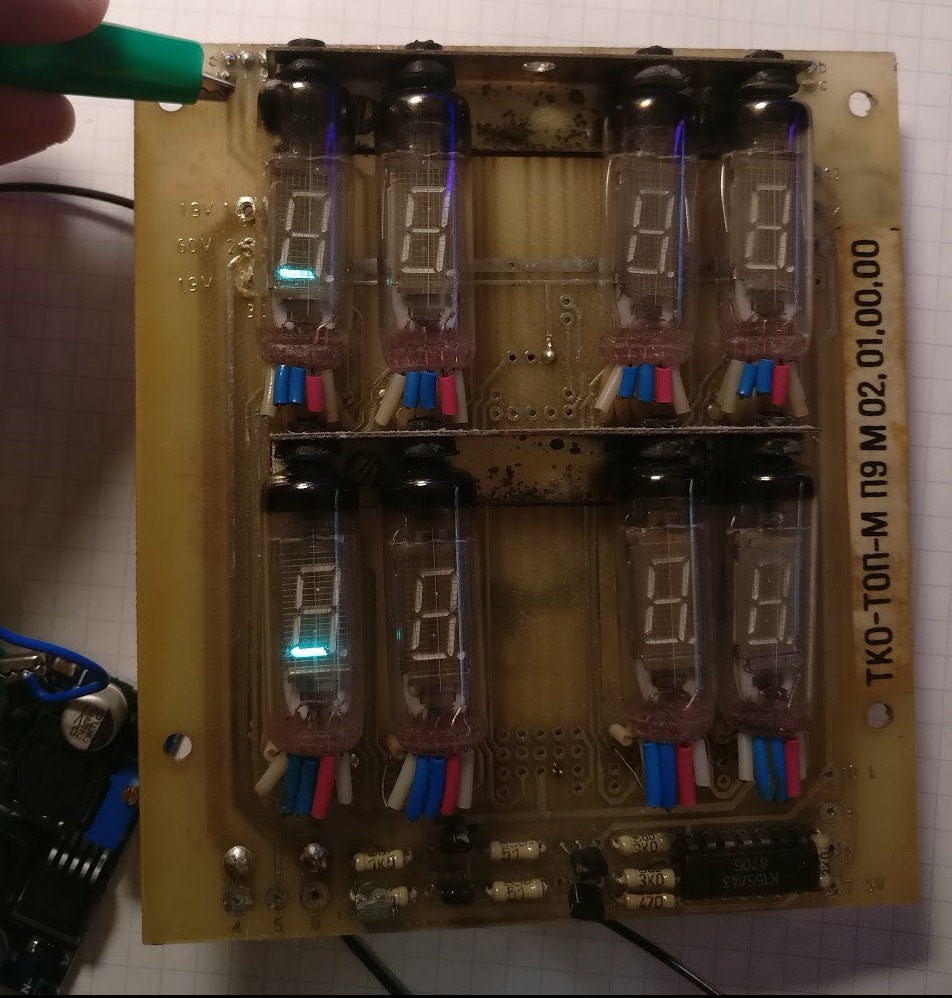
To reverse engineer the board and determine how to drive the tubes, I probed around on the board until I located the filament connections, which were conveniently labelled “1.9v.” All the filaments are connected in parallel. I applied about 2 volts to these points with a bench power supply, set another power supply to 24v, and connected this high voltage to what I believed was the separate grid connections for the top and bottom rows of tubes. I then touched the top header pins with 24v, and the segments lit right up! As I expected, the display is intended to be multiplexed in a 2*4 configuration, illuminating the top and bottom rows alternatively.
The circuitry at the bottom of the board appears to be for driving the grids for the multiplexing operation. Pulling the grid connection of the bottom row low and the one for the top row high would cause only the top row to illuminate. Rapidly switching between lighting the top row and the bottom row gives the illusion that all eight of the tubes are steadily illuminated. It seems these boards were intended to be daisy-chained together to be multiplexed off the same segment control line.
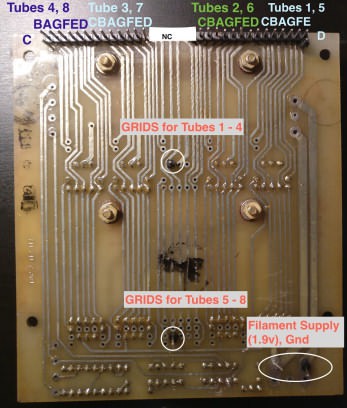
After probing around some more, I have a complete pinout of the board.

Now that I have the display board reverse engineered, my first instinct is to turn it in to a clock! Since the board fits standard .1...
Read more » cselzey
cselzey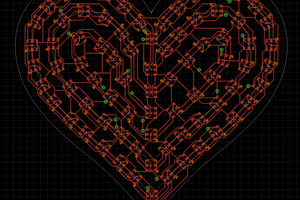
 Jeremy Gilbert
Jeremy Gilbert